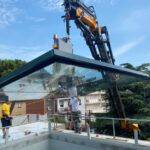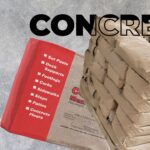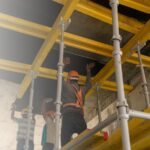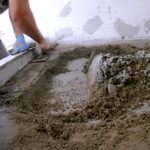Concrete formwork is a temporary or permanent mold into which concrete is poured until it hardens. It shapes and supports it during the curing process, the vital phase where concrete gains strength and durability. Despite its importance, the formwork removal isn’t as straightforward as it sounds. Too early, and you might compromise the strength of the structure; too late, and you risk damaging the aesthetic finish of the concrete.
This blog post dives into these elements, providing a comprehensive guide on when to remove concrete formwork safely and efficiently. We aim to shed light on this often complex and misunderstood topic, distilling expert knowledge and recommendations into an easily digestible format. Whether you’re a seasoned builder, a novice DIYer, or just someone interested in understanding the intricacies of concrete construction, this guide is for you.
Factors Affecting the Timing of Concrete Formwork Removal
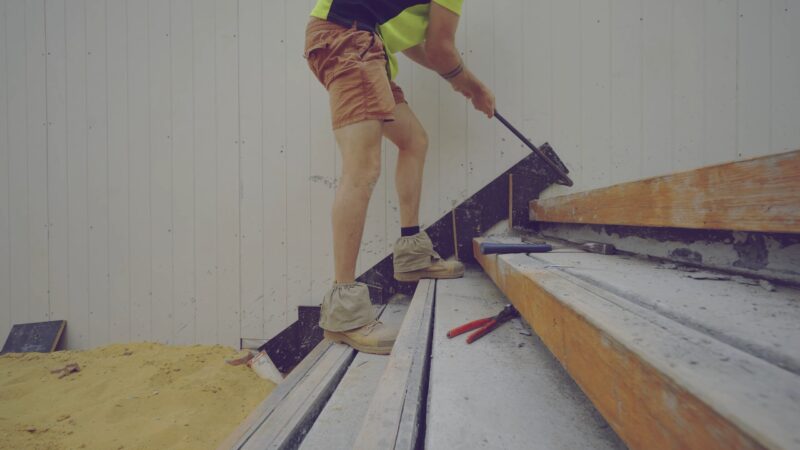
Many factors contribute to the timing of formwork removal. The first is the type of cement used in the concrete mixture. Rapid-hardening cement, for instance, sets faster, reducing the waiting period before formwork removal. On the other hand, low-heat cement takes longer to set, requiring longer retention of formwork.
Secondly, the size and shape of the concrete structure also influence the formwork removal time. For example, thin-walled sections cure quicker than massive structures because the surface-to-volume ratio is higher, accelerating the curing process. Additionally, complex or intricate shapes might require longer formwork retention to ensure full support until the concrete is adequately cured.
Lastly, the method of curing greatly impacts formwork removal timing. Curing methods such as water curing, steam curing, or the use of curing compounds can speed up the curing process, allowing for earlier formwork removal. Conversely, dry curing, often employed in arid regions, extends the formwork removal timeline.
The Role of Concrete Strength
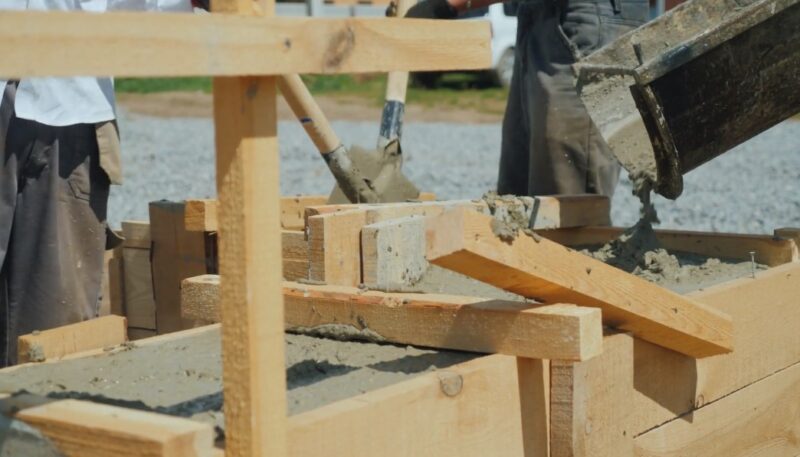
Concrete strength refers to its resistance to stress without breaking or cracking. The process of it gaining strength is known as curing. During curing, it undergoes a chemical reaction known as hydration, where the water and cement form a paste that binds the aggregates together. It’s during this period that concrete gradually gains strength.
The rate at which concrete gains strength depends on the cement type, water-cement ratio, aggregate size, and curing conditions. For instance, lower water-cement ratios, smaller aggregates, and favorable curing conditions (like optimal temperatures and moisture levels) result in faster strength gain. Therefore, understanding these factors is crucial when determining the appropriate time for formwork removal.
Concrete strength is commonly expressed as a percentage of the 28-day compressive strength, the standard period in which it is assumed to have achieved its designated strength. However, it’s critical to note that concrete continues to gain strength beyond this period. Generally, the formwork can be removed once the concrete has attained 70% of its 28-day compressive strength, although this can vary based on the factors discussed above and the type of structure.
Considering Environmental Conditions
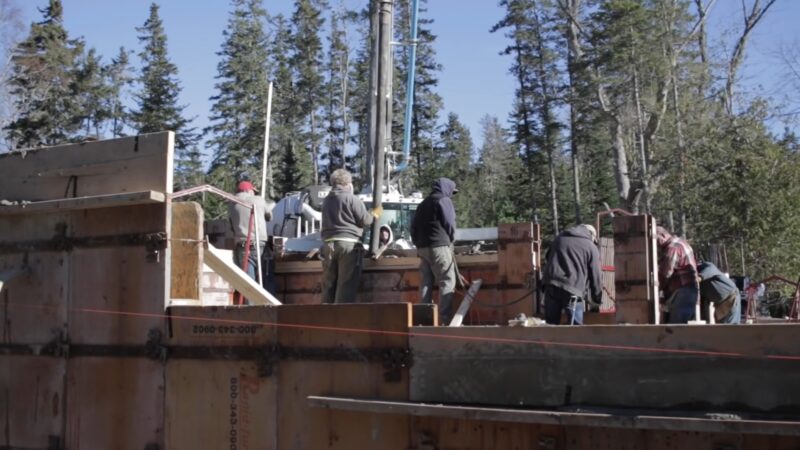
Environmental conditions significantly impact the curing process and, subsequently, the timing for formwork removal. These conditions include temperature, humidity, and wind speed. Warmer temperatures accelerate the chemical reactions involved in curing, leading to quicker strength gain and earlier formwork removal. However, excessively high temperatures can cause rapid water evaporation, leading to shrinkage cracks.
The high relative humidity is beneficial for concrete curing as it prevents excessive evaporation, ensuring the concrete retains enough water for the hydration process. Wind speed affects the rate of evaporation, with high winds potentially causing the concrete surface to dry out too quickly, which can lead to cracking. Thus, understanding these environmental conditions is crucial to determining the appropriate time for formwork removal.
In adverse environmental conditions, builders may need to employ specific strategies to protect the concrete during curing and delay formwork removal. These strategies can include using protective coverings, adjusting the concrete mix, or employing different curing methods. For example, in hot and dry conditions, builders might use a curing compound to reduce evaporation, thus prolonging the formwork retention period.
Appropriate Curing Time
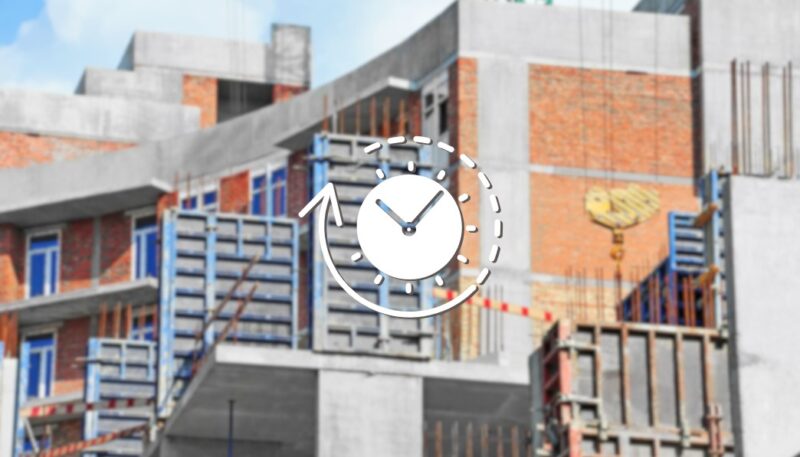
The curing period is the timeframe during which concrete maintains the necessary conditions for hydration to occur. This period is critical for it to attain the desired properties such as strength, durability, and impermeability. Curing time is influenced by various factors, including the type of cement used, the concrete mix design, the size and shape of the structure, and the curing conditions.
The standard curing period is 28 days, during which concrete is expected to reach its specified strength. However, this doesn’t mean that formwork should be kept in place for this entire duration. Depending on the factors discussed above, the formwork can typically be removed once the concrete has achieved about 70% of its 28-day strength.
However, certain conditions might necessitate a longer curing time. For instance, in cold weather, concrete curing slows down significantly due to the slower rate of hydration reactions, necessitating a longer retention of formwork. Conversely, in warmer weather or when using rapid-hardening cement, formwork can often be removed sooner.
Determining the Formwork Removal Time for Vertical Structures
Vertical structures like walls, columns, and piers require special consideration when determining formwork removal time. These structures need to support their own weight and the loads imposed on them, so it’s crucial that they’ve gained sufficient strength before the formwork is removed. Furthermore, these structures often involve more complex formwork, making removal a more delicate process.
For vertical structures, formwork is generally removed in stages. The sides of the formwork are often removed first, usually within 24-48 hours, once the concrete has hardened enough to resist surface damage. However, the bottom or soffit of the formwork (supporting the underside of the structure) is left in place for a longer period to provide support while the concrete continues to gain strength.
The exact timing can vary based on the factors discussed earlier, including the concrete mix design, curing conditions, and specific structural requirements. However, as a general rule, the soffit formwork for vertical structures can usually be removed after about 7-14 days or once the concrete has reached about 70% of its 28-day strength.
Formwork Removal Guidelines for Horizontal Surfaces
Horizontal structures like slabs and beams face different stress conditions compared to vertical structures. They must support their own weight and any imposed loads, but the forces are distributed differently. Therefore, the timing for formwork removal in horizontal structures is often different.
In horizontal structures, the sides of the formwork can usually be removed after about 24-48 hours, similar to vertical structures. However, the soffit formwork (supporting the underside) is typically left in place for a longer period. This is because horizontal structures are more prone to bending stresses, which require the concrete to have gained more strength before the formwork is removed.
The exact timing can again vary based on the concrete mix design, curing conditions, and specific structural requirements. However, as a general rule, the soffit formwork for beams can usually be removed after about 7-14 days, while for slabs, it’s often around 14-21 days, or once the concrete has reached about 70% of its 28-day strength.
Assessing Shrinkage and Creep
Concrete shrinkage and creep are two phenomena that can significantly impact the timing of formwork removal. Shrinkage is the reduction in the volume of the concrete as it dries, which can lead to cracking if not properly managed. Creep is the tendency of concrete to deform under sustained load, leading to long-term deflections in the structure.
Both shrinkage and creep are influenced by the concrete mix design, curing conditions, and the stress conditions in the structure. They are also time-dependent, meaning they occur over a prolonged period. Therefore, the formwork can help mitigate these effects by providing support to the concrete as it hardens and begins to carry the load.
The timing of formwork removal should consider the potential effects of shrinkage and creep. Removing formwork too early can lead to excessive deflections or cracking due to these phenomena. However, leaving formwork in place for too long can also have negative effects, including increased labor and equipment costs and potential damage to the concrete surface.
The Influence of Reinforcement and Load-Bearing Capacity
Reinforcement and load-bearing capacity are two critical considerations in determining the timing of formwork removal. Reinforcement, typically in the form of steel bars or mesh, is used to increase the tensile strength of the concrete and help it resist cracking. The load-bearing capacity refers to the maximum load that the concrete structure can safely support.
The presence of reinforcement can often allow for earlier formwork removal, as the reinforcement helps to carry the tensile stresses in the concrete, reducing the risk of cracking. However, the concrete must still have gained sufficient strength to support its own weight and any imposed loads.
Load-bearing capacity is a function of the concrete strength, the size and shape of the structure, and the loads applied to it. Therefore, the formwork removal timing should ensure that the concrete has reached a strength level where it can safely carry these loads. For structures that will carry significant loads shortly after construction (such as bridge decks or high-rise buildings), longer retention of formwork may be necessary.
Precautions and Safety Measures
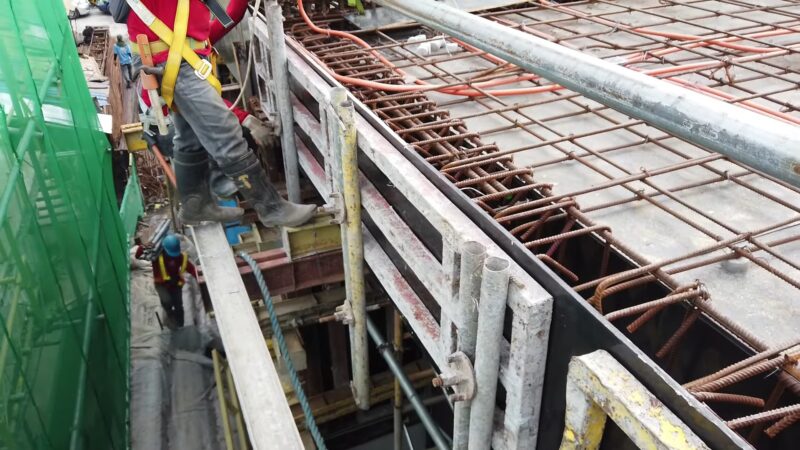
Safety is of paramount importance in any construction operation, including formwork removal. Premature removal can lead to structural failures, causing serious injuries or even fatalities. Therefore, always err on the side of caution. If in doubt, consult an engineer or other qualified professional.
Before starting the formwork removal process, conduct a thorough inspection to ensure that the concrete has hardened sufficiently and is capable of self-support. Avoid full loading of the structure until the concrete has achieved its full design strength. Always follow the manufacturer’s instructions and local codes and regulations for formwork removal.
Formwork removal should be carried out in a systematic manner to prevent uneven loading or stress concentrations. For instance, in vertical structures, it’s common practice to start removing the formwork from the top and work downwards. Proper personal protective equipment (PPE) should be worn during the removal process to protect against falling objects and other hazards.
Expert Recommendations for Optimal Timing
Formwork removal timing can vary greatly depending on the specific circumstances of the project. However, several expert sources offer general recommendations. The American Concrete Institute (ACI) provides guidelines based on the percentage of the 28-day strength that the concrete has achieved. For instance, formwork for walls, columns, and vertical sides of beams can typically be removed after 24-48 hours or when the concrete has reached 10% of its 28-day strength.
Soffit formwork for beams and slabs can usually be removed after 7-14 days or when the concrete has reached approximately 70% of its 28-day strength. However, these are general guidelines and may not be suitable for all situations. It’s crucial to consider the specific requirements of your project, including the concrete mix design, curing conditions, and the type and magnitude of loads that the structure will carry.
Final Words
Understanding the intricacies of concrete formwork removal timing can seem daunting, given the multitude of factors involved. However, with a clear grasp of the underlying principles, it becomes a manageable task. Always consider the concrete’s strength, environmental conditions, structure type, and load-bearing capacity. Prioritize safety and consult with experts if in doubt.
In the end, remember that patience is key. Allow your concrete the time it needs to achieve the necessary strength. Rushing the process can lead to costly mistakes and safety hazards. When done correctly, you’ll have a concrete structure that is strong, durable, and built to last.


